Related Research Articles

Andy Warhol was an American artist, film director, and producer who was a leading figure in the visual art movement known as pop art. His works explore the relationship between artistic expression, advertising, and celebrity culture that flourished by the 1960s, and span a variety of media, including painting, silkscreening, photography, film, and sculpture. Some of his best known works include the silkscreen paintings Campbell's Soup Cans (1962) and Marilyn Diptych (1962), the experimental film Chelsea Girls (1966), and the multimedia events known as the Exploding Plastic Inevitable (1966–67).

Valerie Jean Solanas was an American radical feminist and author best known for writing the SCUM Manifesto, which she self-published in 1967, and attempting to murder Andy Warhol in 1968.
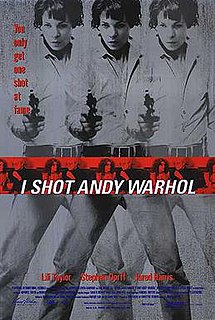
I Shot Andy Warhol is a 1996 American-British independent film about the life of Valerie Solanas and her relationship with the artist Andy Warhol. The film marked the feature film directorial debut of Canadian director Mary Harron. The film stars Lili Taylor as Valerie, Jared Harris as Andy Warhol, and Martha Plimpton as Valerie's friend Stevie. Stephen Dorff plays Warhol superstar Candy Darling. John Cale of The Velvet Underground wrote the film's score despite protests from former band member Lou Reed. Yo La Tengo plays an anonymous band that is somewhat reminiscent of the group.

Edith Minturn Sedgwick was an American socialite, actress and fashion model. She is best known for being one of Andy Warhol's superstars. Sedgwick became known as "The Girl of the Year" in 1965 after starring in several of Warhol's short films in the 1960s. She was dubbed an "It Girl", while Vogue magazine also named her a "Youthquaker".
Brigid Berlin is an American artist and former Warhol superstar.
Warhol superstars were a clique of New York City personalities promoted by the pop artist Andy Warhol during the 1960s and early 1970s. These personalities appeared in Warhol's artworks and accompanied him in his social life, epitomizing his famous dictum, "In the future everyone will be famous for fifteen minutes". Warhol would simply film them, and declare them "superstars".

Eric Emerson was an American musician, dancer, and actor. Emerson is best known for his roles in films by pop artist Andy Warhol, and as a member of the seminal glam punk group, the Magic Tramps.

The Factory was Andy Warhol's New York City studio, which had three different locations between 1962 and 1984. The original Factory was on the fifth floor at 231 East 47th Street, in Midtown Manhattan. The rent was one hundred dollars per year. Warhol left in 1967 when the building was scheduled to be torn down to make way for an apartment building. He then relocated his studio to the sixth floor of the Decker Building at 33 Union Square West near the corner of East 16th Street, where he was shot in 1968 by Valerie Solanas. The Factory was revamped and remained there until 1973. It moved to 860 Broadway at the north end of Union Square. Although this space was much larger, not much filmmaking took place there. In 1984 Warhol moved his remaining ventures, no longer including filming, to 22 East 33rd Street, a conventional office building. Many Warhol films, including those made at the Factory, were first shown at the New Andy Warhol Garrick Theatre or 55th Street Playhouse.

Joseph Angelo D'Allesandro III is an American actor and Warhol superstar. Having also crossed over into mainstream roles like mobster Lucky Luciano in The Cotton Club, Dallesandro is generally considered to be the most famous male sex symbol of American underground films of the 20th century, as well as a sex symbol of gay subculture.

"Walk on the Wild Side" is a song by Lou Reed from his second solo album, Transformer (1972). It was produced by David Bowie and Mick Ronson, and released as a double A-side with "Perfect Day". The song received wide radio coverage, despite its touching on taboo topics such as transsexual people, drugs, male prostitution, and oral sex. In the United States, RCA released the single using an edited version of the song without the reference to oral sex. In 2010, Rolling Stone ranked it at number 223 in its list of the 500 greatest songs of all time.
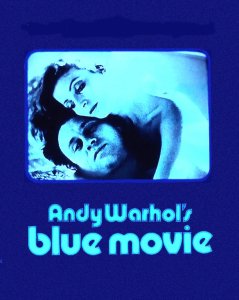
Blue Movie is a 1969 American film written, produced, and directed by Andy Warhol. Blue Movie, the first adult erotic film depicting explicit sex to receive wide theatrical release in the United States, is a seminal film in the Golden Age of Porn (1969–1984), and helped inaugurate the "porno chic" phenomenon, in which porn was being publicly discussed by celebrities and taken seriously by film critics, in modern American culture, and later, in many other countries throughout the world. According to Warhol, Blue Movie was a major influence in the making of Last Tango in Paris, an internationally controversial erotic drama film, starring Marlon Brando, and released a few years after Blue Movie was made. Viva and Louis Waldon, playing themselves, starred in Blue Movie.
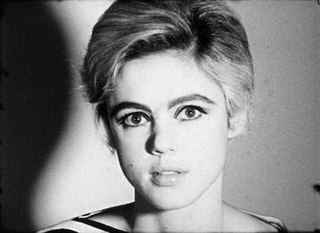
The Screen Tests are a series of short, silent, black-and-white film portraits by Andy Warhol, made between 1964 and 1966, generally showing their subjects from the neck up against plain backdrops. The Screen Tests, of which 472 survive, depict a wide range of figures, many of them part of the mid-1960s downtown New York cultural scene. Under Warhol’s direction, subjects of the Screen Tests attempted to sit motionless for around three minutes while being filmed, with the resulting movies projected in slow motion. The films represent a new kind of portraiture—a slowly moving, nearly still image of a person. Warhol's Screen Tests connect on one hand with the artist's other work in film, which emphasized stillness and duration, and on the other hand with his focus after the mid-1960s on documenting his celebrity milieu in paintings and other works.
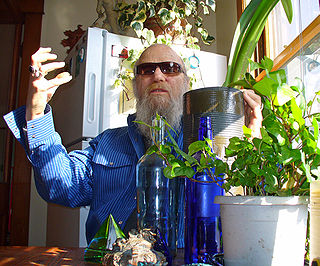
William George Linich, known professionally as Billy Name, was an American photographer, filmmaker, and lighting designer. He was the archivist of The Factory from 1964 to 1970. His brief romance and subsequent friendship with Andy Warhol led to substantial collaboration on Warhol's work, including his films, paintings, and sculptures. Linich became Billy Name among the clique known as the Warhol Superstars. He was responsible for "silverizing" Warhol's New York studio, the Factory, where he lived until 1970. His photographs of the scene at the Factory and of Warhol are important documents of the pop art era.

a, A Novel is a 1968 book by the American artist Andy Warhol published by Grove Press. It is a nearly word-for-word transcription of tapes recorded by Warhol and Ondine over a two-year period in 1965–1967.
Taylor Mead's Ass is a film by Andy Warhol featuring Taylor Mead, consisting entirely of a shot of Mead's buttocks, and filmed at The Factory in 1964.
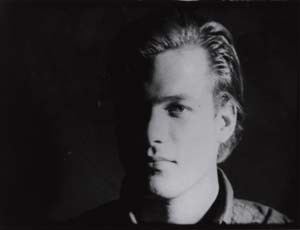
Paul Johnson, better known as Paul America, was an American actor who was a member of Andy Warhol's Superstars. He starred in one Warhol-directed film, My Hustler (1965), and also appeared in Edie Sedgwick's final film Ciao! Manhattan (1972).

The Philosophy of Andy Warhol is a 1975 book by the American artist Andy Warhol. It was first published by Harcourt Brace Jovanovich.

Popism: The Warhol Sixties is a 1980 memoir by the American artist Andy Warhol. It was first published by Harcourt Brace Jovanovich.
The Shot Marilyns is a work of art produced in 1964 by Andy Warhol. It consists of four canvases, each a square measuring 40 inches and each consisting of a painting of Marilyn Monroe, each shot through in the forehead by a single bullet.
John P. "Johnny" Dodd was a lighting designer for theater, dance and music active in the downtown art scene in Manhattan during the last half of the 20th century.
References
- ↑ "Kenneth C Rapp". Fold3. Retrieved May 8, 2020.
- ↑ Watson, Steven (2003). Factory Made: Warhol and the Sixties. Pantheon Books. p. 223. ISBN 9780679423720.
- ↑ Shorr, Catherine O'Sullivan (2015). "Factory Life". Speeding Into the Future: The Amphetamine-Fueled Generation. Open Road Media. ISBN 9781504010528.
- ↑ Woronov, Mary (2000) - Swimming Underground: My Years in the Warhol Factory. Serpent's Tail/REI. ISBN 1-85242-719-1.
- ↑ Andy Warhol; Pat Hackett (12 October 2007). POPism. Penguin Books Limited. p. 80. ISBN 978-0-14-190526-6.
- ↑ Jim DeRogatis (2003). Milk It!: Collected Musings on the Alternative Music Explosion of the 90's. Da Capo Press. pp. 185–196. ISBN 0-306-81271-1.
- ↑ The New York Times (20 May 2009). The New York Times Book of New York: Stories of the People, the Streets, and the Life of the City Past and Present. Black Dog & Leventhal Publishers. p. 35. ISBN 978-1-60376-369-1.
| This United States biographical article is a stub. You can help Wikipedia by expanding it. |